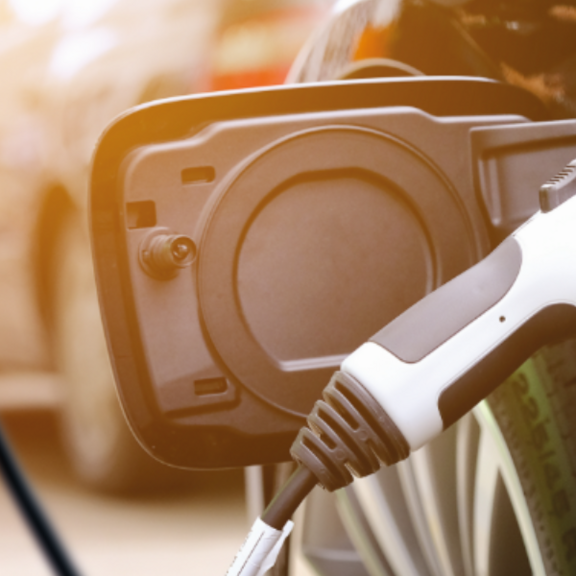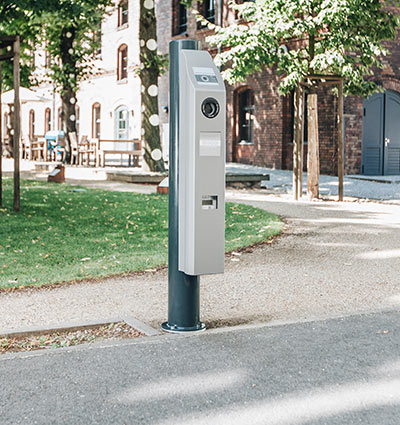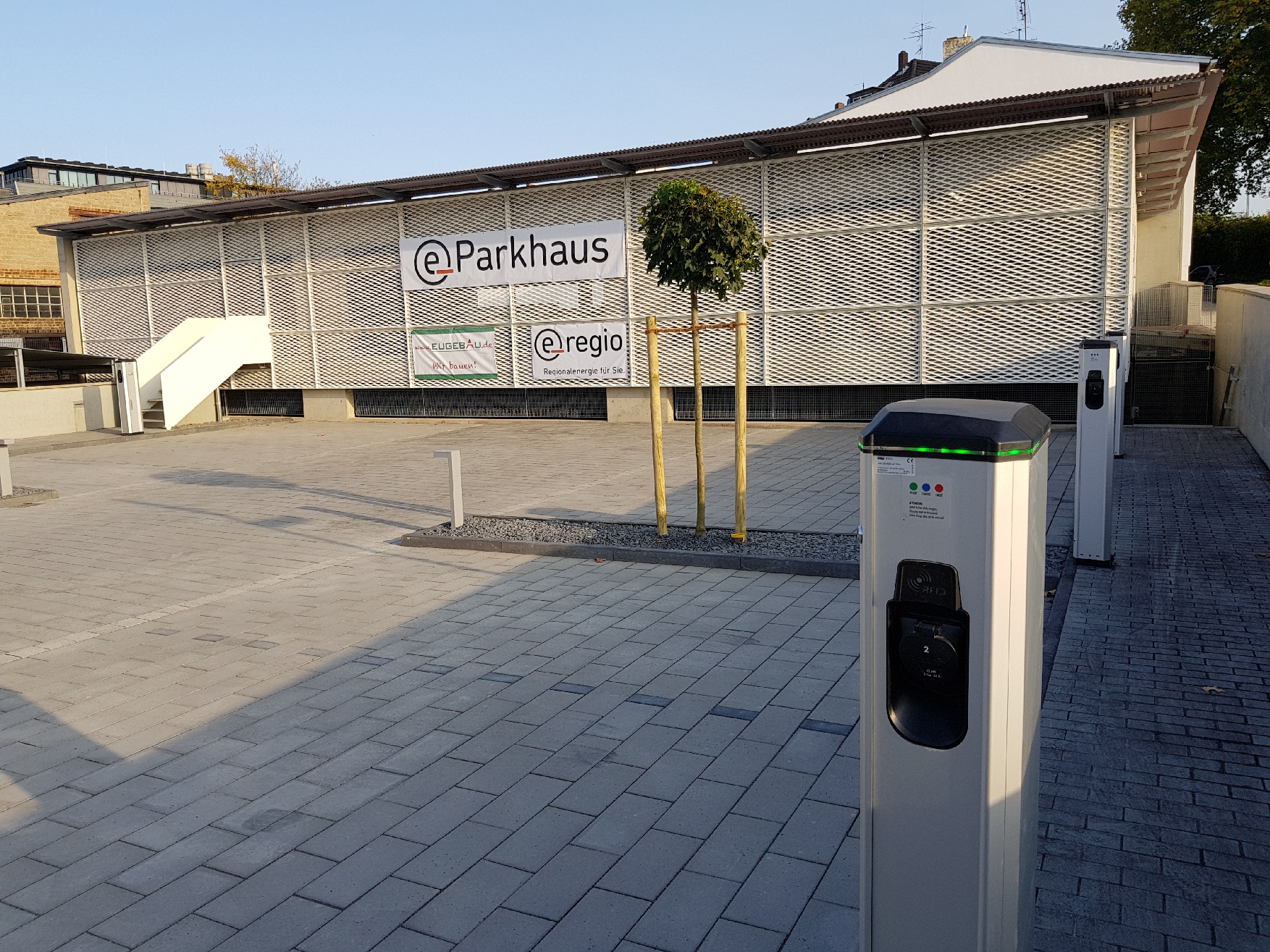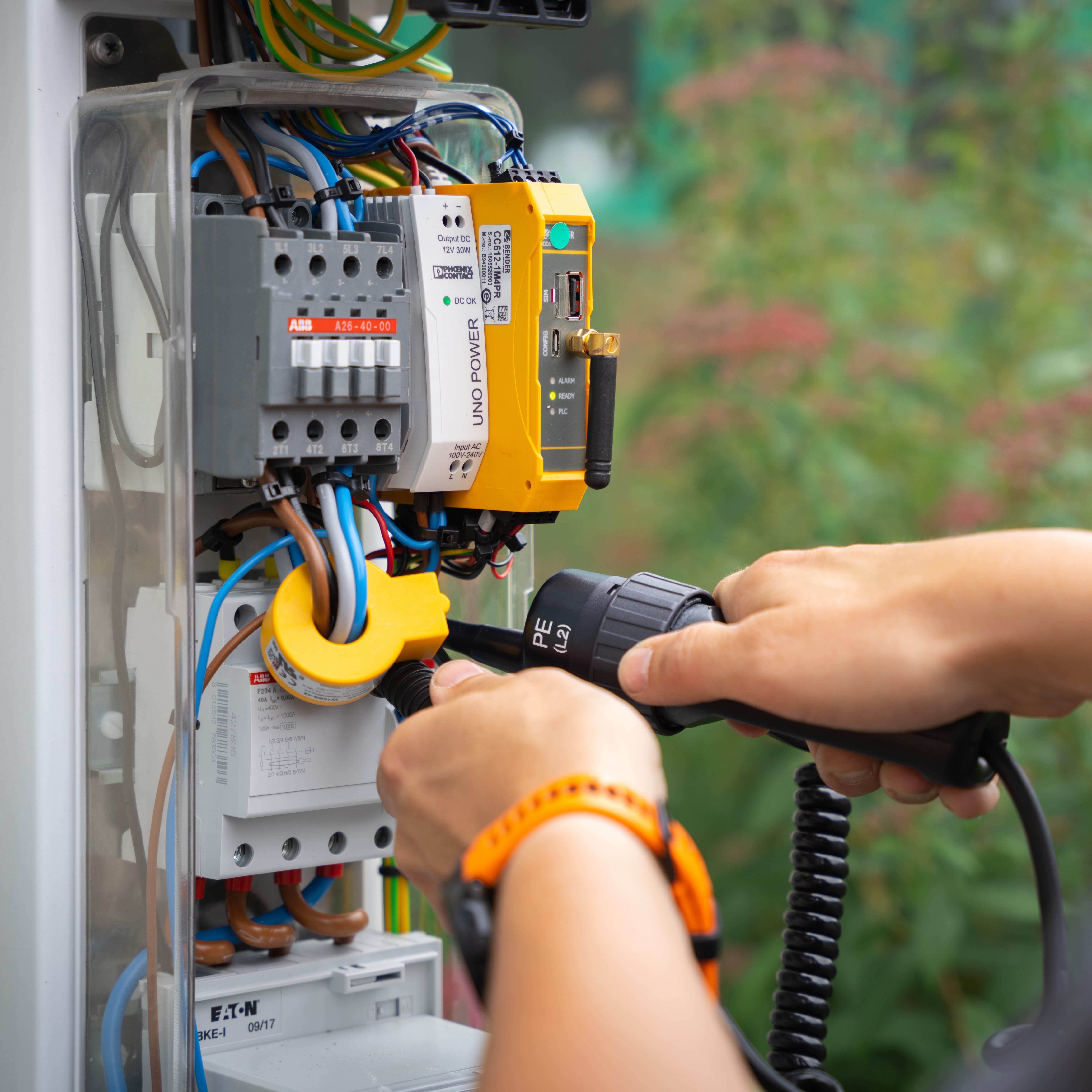

At a charging station, the power resources are limited. Especially in cities, the demand for electricity for electric cars is very high at certain times of the day. When setting up more than one charging station, one thing quickly becomes clear: The required connected load increases with each additional charging point. If this energy demand were always covered 100%, then in the worst case scenario, additional cars could not be charged immediately. Intelligent control of resources and energy flows is therefore a basis for efficient and economical operation of charging infrastructures.
The use of load management for the cars to be charged is the solution here.
Charging parks for electric cars can absorb a large amount of energy within a short time. Planners, installers and operators of charging infrastructures have to face a wide variety of challenges with regard to the energy supply at a location, because electric cars are not the only consumers of energy. Often, no additional power connection is provided or available either structurally or by the grid operator. In most cases, the existing connection capacity should be used and not expanded for cost reasons. Furthermore, it is often not known how much power is still available at your existing house connection.
In order to optimally distribute the required energy, so-called load management comes into play, because modern charging stations offer the possibility of optimally utilising existing resources.
The term load management refers to the control of electricity demand through the targeted switching on or off of electricity consumers or the adjustment of the required electricity consumption.
Load control measures are used in both the energy sector and the mobility sector, because charging stations for electric vehicles can absorb a lot of energy in a short time. In most cases, however, electric vehicles are not the only energy consumers at a site. In addition, additional power connections are often not planned or available at a site due to construction work or the grid operator. For cost reasons, the existing connection capacity should generally be used and not expanded. In addition, it is often not known how much power is still available from existing house connections at which point in time. In order to optimally distribute the required power, so-called load management is used.
Load management allows the available power from the grid connection to be distributed to all connected charging points. This means that peak loads can be avoided.
Peak loads are the times of day when demand for electricity is highest. This is usually in the early evening when people come home from work and switch on lights and appliances.
However, peak loads also occur in the hot summer months when air conditioners and other energy-intensive appliances are used. Energy suppliers must prepare for these peaks in demand, often by generating additional electricity or bringing idle power plants back online. These measures help to ensure that the grid remains stable and that everyone has the power they need. The goal of load management is therefore to develop an intelligent power grid. To implement this, the existing infrastructure is equipped with additional control technology.
..the basis for efficient charging.
The heart of every charging pole is the charge controller. It is responsible for controlling and monitoring the charging process. At the same time, it is also the interface to other components. With the CC613 charge controller, Bender has developed an intelligent and future-proof solution.
It communicates with the vehicle and the backend, it monitors the internal hardware of the charging system, the user interfaces and the connection from the charging station to the vehicle. With the integrated dynamic load management, even large charging parks with more than 250 charging stations can be charged optimally and managed remotely via a building management system. All charge controllers in the charging infrastructure network communicate via Modbus. One charge controller is defined as the master and all others as slaves. No superordinate additional master unit is necessary, because the smart charge controllers from Bender work autonomously.
Planning charging infrastructure is a particular challenge, as professional planners are confronted with a large number of charging station suppliers. In the past, each manufacturer had its own solution, especially in terms of load management, data connection and billing. Most pursue proprietary methods that sooner or later lead to a dead end, especially in view of the current rapid development of charging technology and changing framework conditions. These include topics such as calibration law, ISO15118, dynamic load management, or the avoidance of extreme skew loads on the phases.
Some operators do not know today how many charging stations they want to operate at their site in the next 2-5 years. Therefore, we name the TOP requirements that ensure that the charging park can be flexibly expanded:
Retrofitting
When retrofitting, the sub-distribution should ideally no longer be touched.
Infrastructure
New charging points must be able to be integrated into the existing infrastructure.
Cross manufacturers
The charging park should be configurable across charging station manufacturers.
Expandable
The charging park should be expandable by individual DC chargers (up to 50kW).

Cologne's Stadthotel am Römerturm installs first calibration-compliant version of ebee charging points

A parking deck on two levels, which simultaneously functions as a large solar filling station with 32 fuel pumps for electric cars, was built at the end of 2017 in the city centre of Euskirchen.

Bender offers with the new generation Charge Controller CC613 the basis for an AC charging station or wallbox
The term load management refers to the active control of electricity consumption. The aim of load management is not to exceed the available grid connection capacity and to optimally distribute the available power among all consumers.
Without load management, peak loads can occur that exceed the grid connection capacity agreed with the energy supplier.
Load management enables simultaneous, parallel charging. The available charging power is distributed to the individual cars being charged.
Always! With a limited house connection, I always make the best use of the rest and then expand as required.